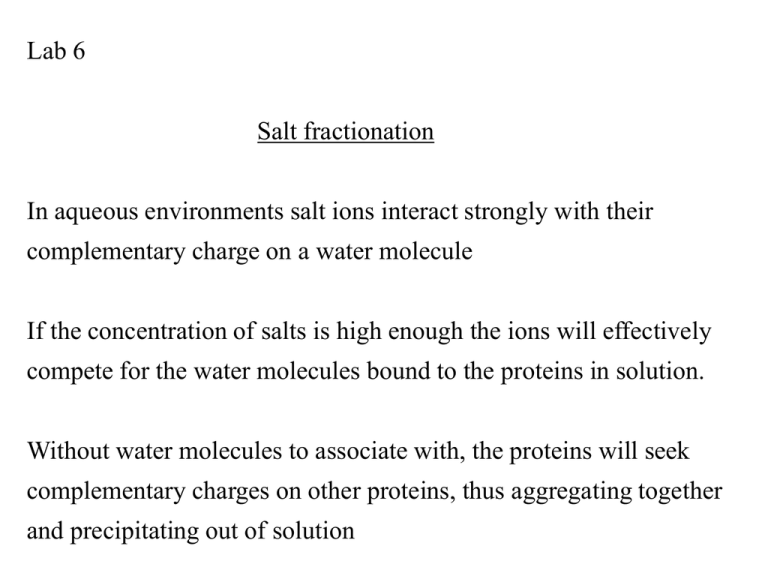Salt fractionation
advertisement

Lab 6 Salt fractionation In aqueous environments salt ions interact strongly with their complementary charge on a water molecule If the concentration of salts is high enough the ions will effectively compete for the water molecules bound to the proteins in solution. Without water molecules to associate with, the proteins will seek complementary charges on other proteins, thus aggregating together and precipitating out of solution A. Ammonium sulphate precipitation Ammonium salts precipitates out different proteins at different concentrations, depending on physical properties of the protein IgG is quite hydrophobic so it precipitates out before many other proteins. Advantage: concentrates your proteins B. Caprylic acid (Octanic acid) Weak acidic buffer plus the addition of short chain fatty acids, (caprylic acid) will precipitate most serum proteins (not IgG) Inexpensive, fast CH3(CH2)6COOH C. Ion exchange chromatography The DEAE part of the anion exchange matrix DEAE-Sephacel DEAE has a net positive charge, so it binds proteins that have a net negative charge (anions) The net charge on a protein will change in response to the pH in its environment. Each protein has a distinct isoelectric point and thus has a distinct pH at which it will no longer bind an ion exchange column DEAE cellulose: separates on basis of charge Usually in ion exchange chromatography the proteins are bound to the matrix and then pH is gradually altered so that proteins with different isoelectric points are eluted off the matrix at different points in the pH gradient. The same can be achieved by increasing the salt concentration as shown here D. Protein A or Protein G columns Especially good for mAb purification from ascites i.e.mouse IgG1 Very species and isotype specific Principles of dialysis Tubing has a molecular weight cut-off that indicates the size of the pores or holes in the membrane. All proteins, and contaminants that are smaller than the holes will leak out. Water often will leak in to dilute the salts.








